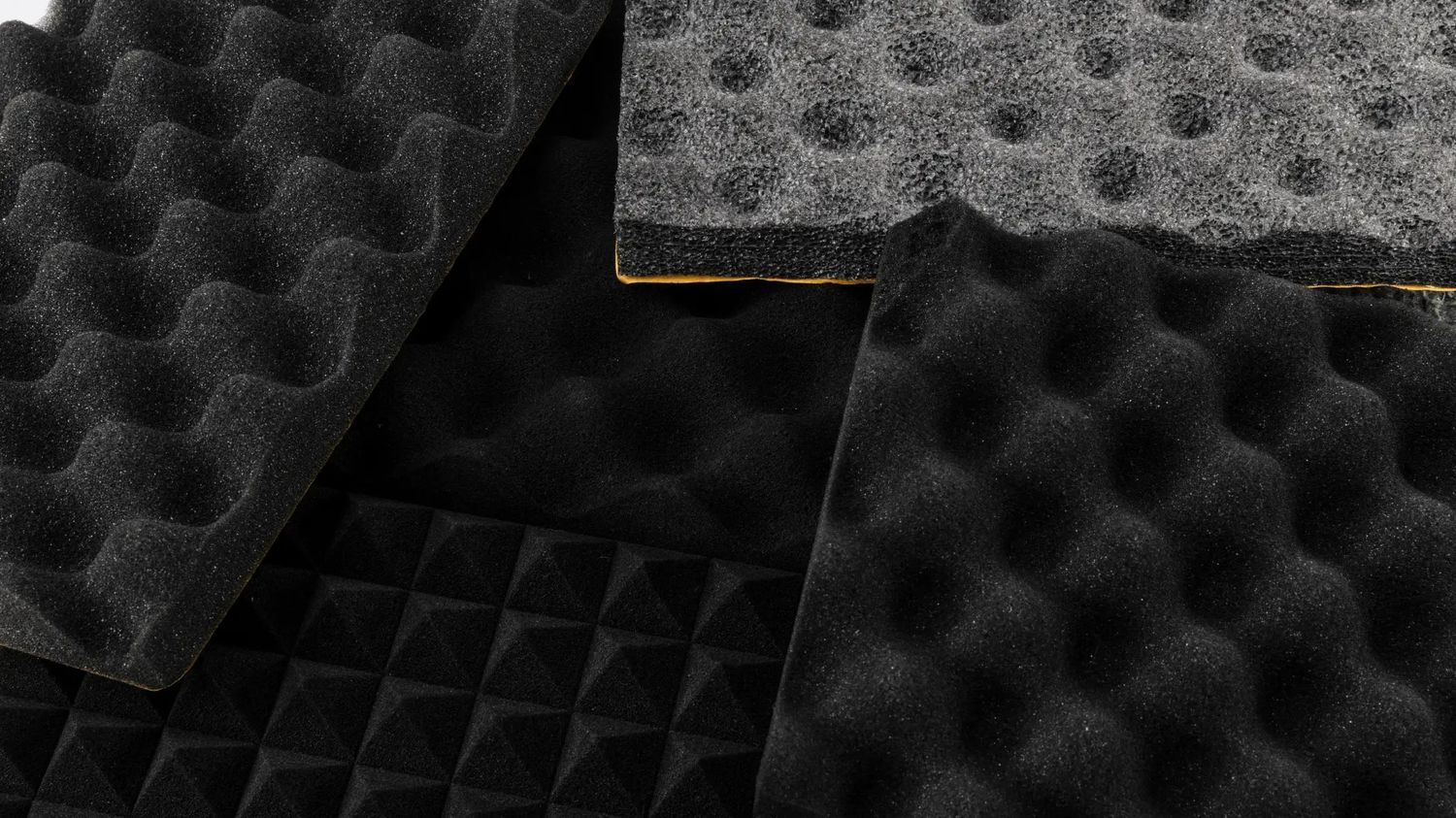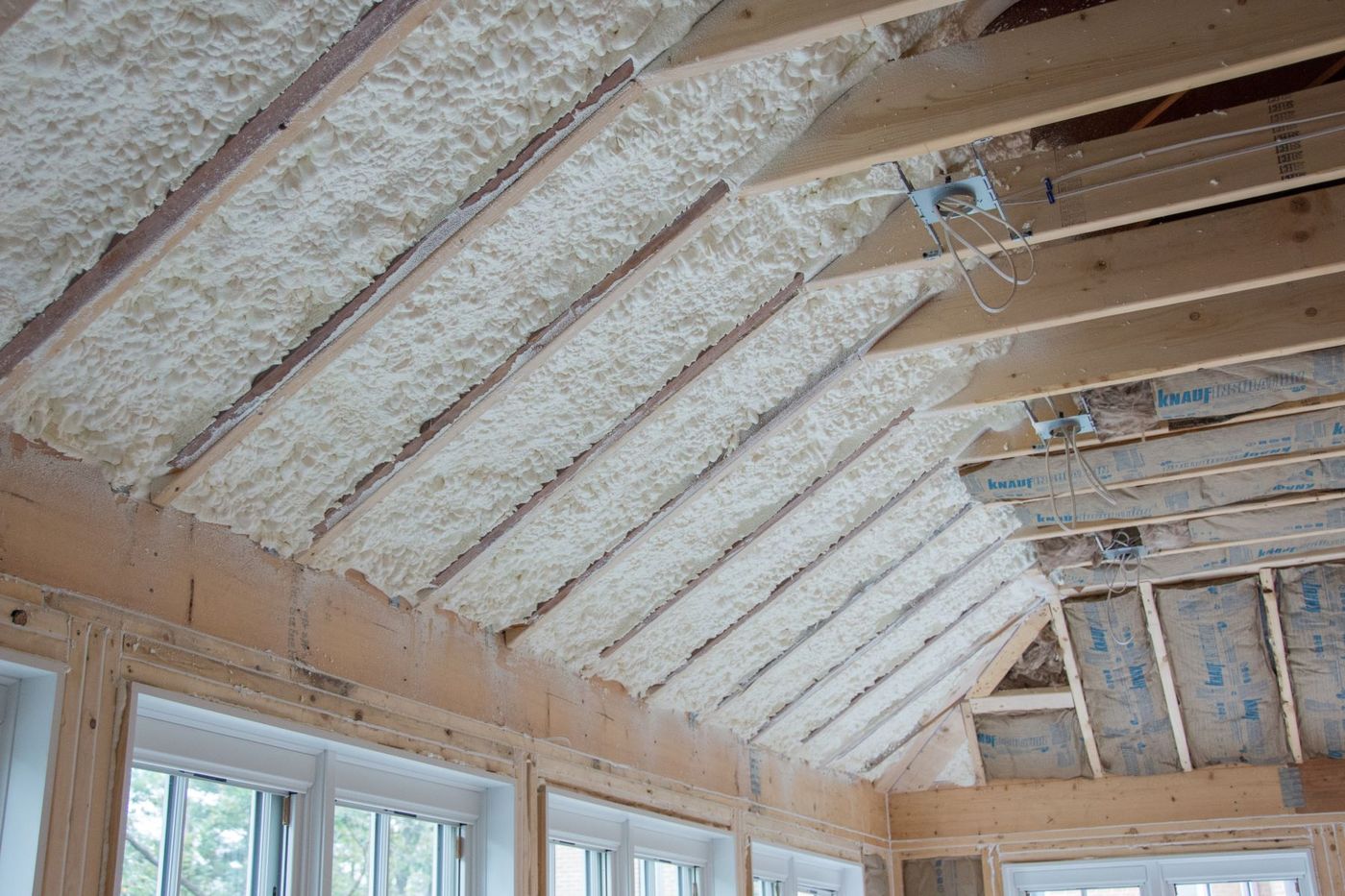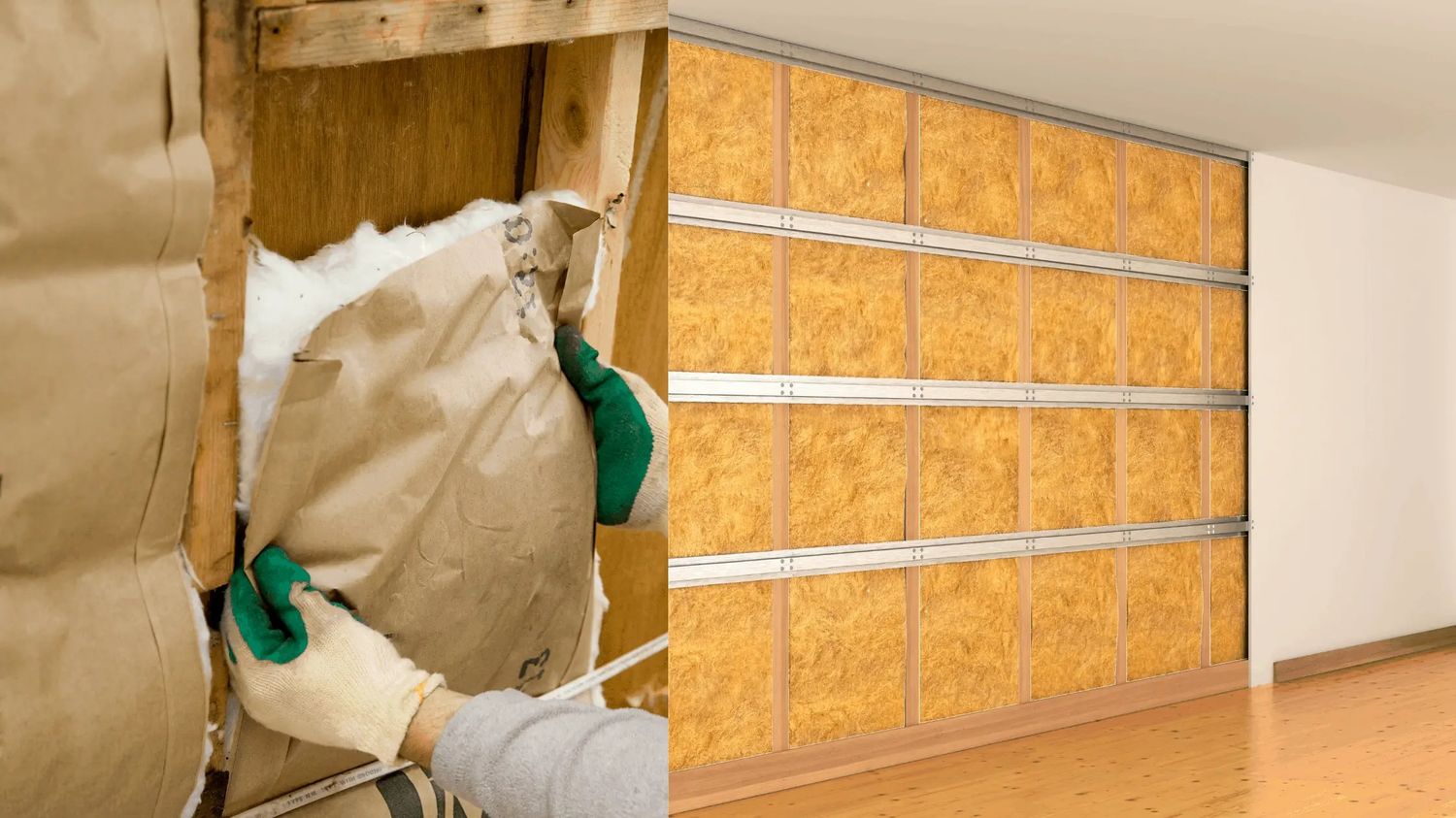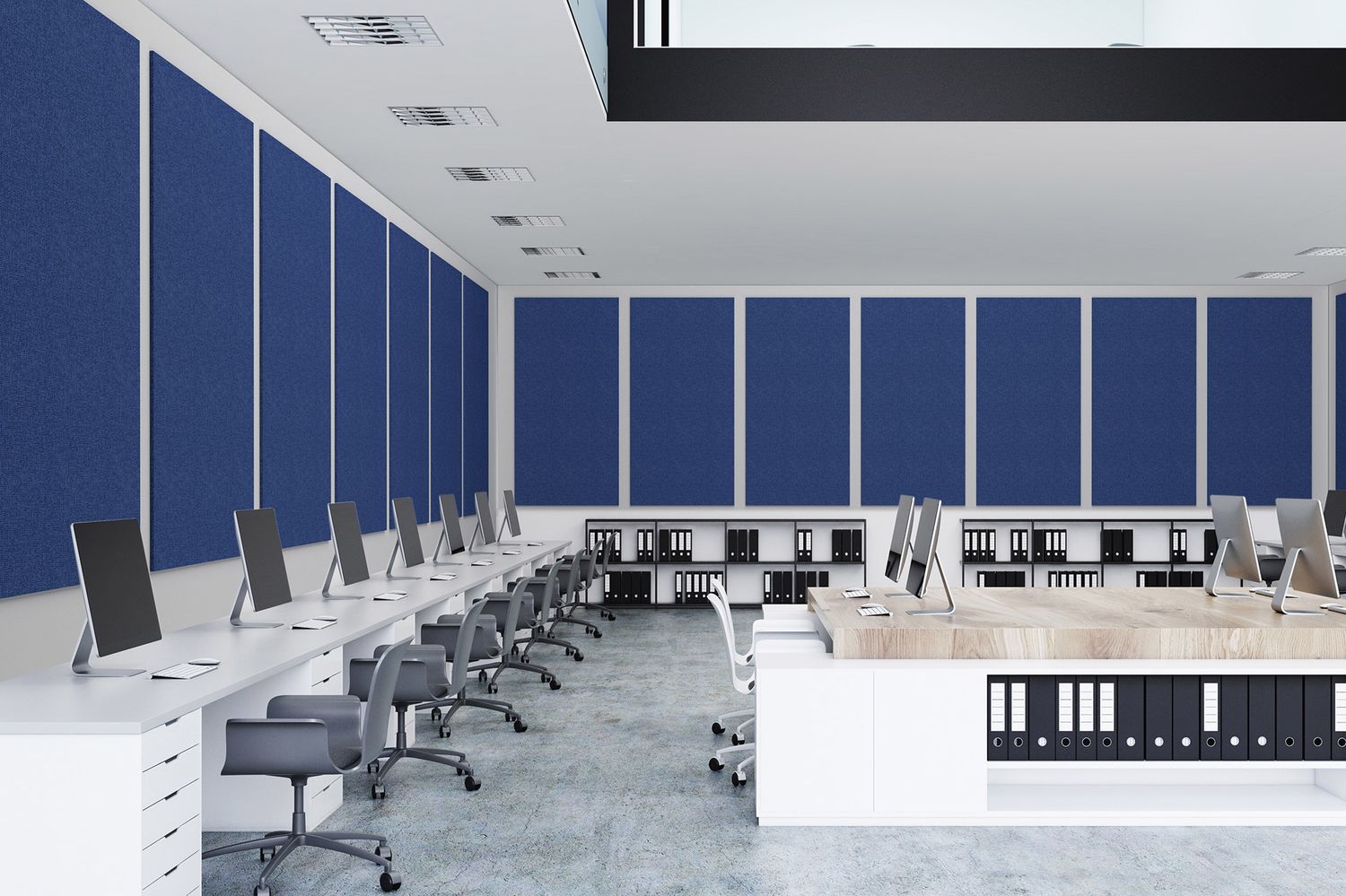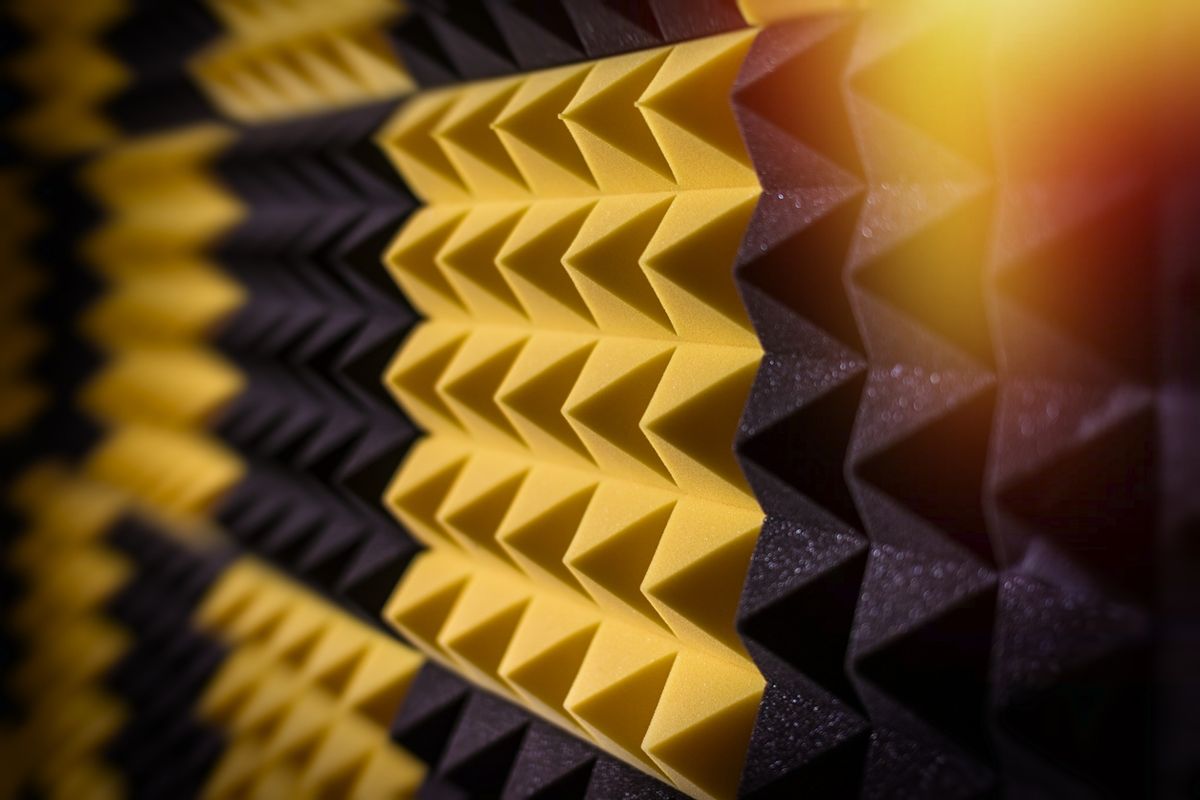Home>Production & Technology>Soundproofing>What Is The Metric To Measure Soundproofing


Soundproofing
What Is The Metric To Measure Soundproofing
Published: January 26, 2024
Learn about the metric used to evaluate the effectiveness of soundproofing. Discover how soundproofing can reduce noise pollution and enhance your living or working environment.
(Many of the links in this article redirect to a specific reviewed product. Your purchase of these products through affiliate links helps to generate commission for AudioLover.com, at no extra cost. Learn more)
Table of Contents
- Introduction
- Definition of Soundproofing
- Importance of Measuring Soundproofing
- Common Metrics for Measuring Soundproofing
- Sound Transmission Class (STC)
- Impact Insulation Class (IIC)
- Noise Reduction Coefficient (NRC)
- Sound Absorption Average (SAA)
- Field Sound Transmission Class (FSTC)
- Evaluation of Soundproofing Materials and Techniques
- Conclusion
Introduction
Soundproofing is an essential aspect of creating a comfortable and peaceful environment. Whether it’s in a residential, commercial, or industrial setting, soundproofing plays a crucial role in reducing unwanted noise and creating a more serene space. But how do we measure the effectiveness of soundproofing? What metrics are used to evaluate its performance?
In this article, we will delve into the world of soundproofing and explore the different metrics used to measure its effectiveness. We will discuss the importance of measuring soundproofing, the common metrics used in the industry, and how they help in evaluating the performance of soundproofing materials and techniques.
While many of us may associate soundproofing with simply blocking out noise, it is a multifaceted concept that involves various factors such as sound transmission, absorption, and insulation. To truly understand and assess the effectiveness of soundproofing, it is important to have a comprehensive understanding of the metrics used to measure it.
These metrics not only help in determining the level of soundproofing achieved but also aid in comparing and selecting the most suitable soundproofing materials and techniques for a specific application.
So, whether you’re looking to soundproof a bedroom, office, recording studio, or any other space, understanding the metrics used in the industry will empower you to make informed decisions and achieve the desired level of soundproofing.
Definition of Soundproofing
Before we dive into the metrics used to measure soundproofing, it’s important to have a clear understanding of what soundproofing actually entails. Soundproofing is the process of reducing or blocking the transmission of sound waves from one space to another. It aims to create a barrier that prevents sound from entering or escaping a designated area.
Soundproofing is achieved through a combination of techniques and materials that help absorb, reflect, or isolate sound waves. These techniques can include the use of specialized insulation, acoustic panels, double-glazed windows, and sound barriers.
The primary goals of soundproofing are to enhance privacy, create a peaceful environment, maintain confidentiality, improve productivity, and comply with noise regulations. By reducing noise levels and controlling vibrations, soundproofing contributes to the overall comfort and well-being of individuals in a particular space.
It’s important to note that soundproofing is different from sound absorption. While soundproofing focuses on preventing the transmission of sound, sound absorption aims to reduce the reflection and reverberation of sound within a room. Soundproofing is usually achieved through a combination of sound absorption and sound insulation techniques.
In summary, soundproofing is the process of minimizing the transfer of sound waves between spaces, while sound absorption is the reduction of sound reflections within a space.
Now that we have a clear understanding of what soundproofing entails, let’s explore the metrics used to measure its effectiveness.
Importance of Measuring Soundproofing
Measuring soundproofing is essential for several reasons. It allows us to objectively assess the effectiveness of soundproofing materials and techniques, ensure compliance with noise regulations, and make informed decisions when selecting the most suitable soundproofing solutions for specific applications.
One of the primary reasons for measuring soundproofing is to evaluate the level of noise reduction achieved. By accurately measuring soundproofing, we can determine how effective a particular soundproofing system or material is in reducing the transmission of sound waves. This information helps us assess whether a space meets the required noise standards and provides an objective basis for comparison between different soundproofing options.
Another crucial aspect of measuring soundproofing is compliance with noise regulations. Many industries, such as construction, hospitality, and entertainment, are subject to strict noise regulations and standards. Measuring soundproofing ensures that these regulations are met, minimizing the risk of noise-related complaints, legal issues, or disruptions to nearby occupants.
Furthermore, measuring soundproofing allows us to identify areas that need improvement or modification. By accurately measuring the sound transmission between spaces, we can pinpoint weak points in the soundproofing system and take appropriate measures to enhance its performance. This could involve adding additional sound absorption materials, reinforcing insulation, or making adjustments to the overall construction design.
Measuring soundproofing also contributes to the decision-making process when selecting soundproofing materials and techniques. By evaluating different metrics, such as Sound Transmission Class (STC) or Impact Insulation Class (IIC), we can assess the performance of various options and choose the most suitable one for a specific application. This ensures that the selected soundproofing solution meets the desired level of noise reduction and aligns with the specific requirements of the space.
In summary, measuring soundproofing is crucial for evaluating performance, ensuring compliance with noise regulations, identifying areas for improvement, and making informed decisions in soundproofing applications. It provides a quantitative basis for assessing noise reduction and aids in achieving the desired level of acoustic comfort and privacy in various environments.
Common Metrics for Measuring Soundproofing
When it comes to measuring soundproofing, there are several commonly used metrics that help assess the effectiveness of soundproofing materials and techniques. These metrics provide objective measurements and allow for comparisons between different soundproofing options. Let’s explore some of the most common metrics:
- Sound Transmission Class (STC): The Sound Transmission Class measures the airborne sound loss between two spaces. It evaluates how well a material or a construction assembly reduces sound transmission at various frequencies. The higher the STC rating, the better the soundproofing performance. STC ratings typically range from 25 to 70, with higher values indicating better soundproofing.
- Impact Insulation Class (IIC): The Impact Insulation Class measures the impact sound insulation performance of a floor or ceiling system. It determines how well a material or construction assembly reduces the transmission of impact or structure-borne noise, such as footsteps or moving furniture, from one space to another. Similar to STC, higher IIC ratings indicate better soundproofing performance.
- Noise Reduction Coefficient (NRC): The Noise Reduction Coefficient measures the sound absorption performance of a material. It characterizes how much sound energy a material absorbs across different frequencies. NRC ratings range from 0 to 1, with higher values indicating better sound absorption. This metric is commonly used for evaluating the effectiveness of acoustic panels, foam, or other materials designed to reduce reflected sound within a space.
- Sound Absorption Average (SAA): The Sound Absorption Average is another metric used to assess the sound absorption performance of materials. It provides a numerical average of the sound absorption coefficients at different frequencies. SAA values range from 0 to 1, with higher values indicating better sound absorption across a wider range of frequencies.
- Field Sound Transmission Class (FSTC): The Field Sound Transmission Class is a rating specifically for measuring the performance of existing walls, floors, or ceilings. It assesses the actual soundproofing achieved in real-world conditions, considering factors such as flanking noise and installation quality. The FSTC provides a more accurate measure of soundproofing effectiveness in completed structures.
These metrics, along with others, provide a standardized way of evaluating soundproofing performance. It is important to note that the specific metrics used can vary depending on the application and industry. Understanding and considering these metrics is crucial when selecting soundproofing materials or techniques to ensure they meet the desired level of noise reduction and acoustic requirements.
By utilizing these metrics, soundproofing professionals and enthusiasts can make informed decisions and achieve optimal soundproofing solutions that enhance privacy, reduce noise, and create a more peaceful environment.
Sound Transmission Class (STC)
The Sound Transmission Class (STC) is one of the most widely recognized metrics used to measure the soundproofing performance of materials and constructions. It provides a standardized rating that quantifies how well a material or assembly reduces airborne sound transmission between two spaces.
The STC rating system measures the sound transmission loss across a range of frequencies, typically from 125 Hz to 4000 Hz. A higher STC rating indicates better soundproofing performance, as it signifies a greater reduction in sound transmission across the measured frequencies.
The STC rating is obtained by conducting sound transmission tests in accordance with established standards and methodologies. During these tests, sound is generated on one side of the partition, and the sound levels are measured on both sides. The resulting data is used to calculate the STC rating.
It’s important to note that the STC rating is an average value across the entire frequency range. This means that a material or construction with a high STC rating may perform better at certain frequencies than others.
STC ratings can vary depending on the type of material or construction being tested. For example, solid concrete walls typically have higher STC ratings compared to single-pane windows. Common materials used in soundproofing, such as acoustic panels, insulation, or double-glazed windows, are often labeled with their respective STC ratings to help consumers make informed decisions.
The STC rating system has become widely accepted in the construction and acoustic industries as a way to assess and compare the soundproofing performance of different materials and constructions. It provides a standardized metric that allows for consistent evaluation and improves communication between designers, architects, builders, and consumers.
It is important to note that while STC ratings provide a good indication of sound transmission reduction, they do not capture all aspects of soundproofing, such as impact noise or low-frequency sound transmission. Other metrics, such as the Impact Insulation Class (IIC), can be used in conjunction with the STC rating to assess the overall effectiveness of a soundproofing system.
In summary, the Sound Transmission Class (STC) is a widely used metric that quantifies the soundproofing performance of materials and constructions. It provides a standardized rating system that allows for comparison and selection of the most suitable soundproofing solutions based on the desired level of noise reduction and acoustic requirements.
Impact Insulation Class (IIC)
The Impact Insulation Class (IIC) is a metric used to measure the impact sound insulation performance of a floor or ceiling system. It quantifies how well a material or construction assembly reduces the transmission of impact or structure-borne noise, such as footsteps, furniture being moved, or objects being dropped, from one space to another.
The IIC rating system evaluates the ability of a floor or ceiling assembly to isolate impact sounds and prevent them from being transmitted and amplified in adjacent spaces. It measures the sound insulation performance across a range of frequencies, typically from 100 Hz to 3150 Hz.
Similar to the Sound Transmission Class (STC) rating, a higher IIC rating indicates better soundproofing performance. It signifies that the floor or ceiling system effectively reduces the impact noise transmitted between spaces.
The IIC rating is obtained through standardized testing procedures, which involve generating impact sound on the floor surface and measuring the resulting sound levels in the room below. The measured data is then used to calculate the IIC rating.
It’s important to note that the IIC rating primarily measures the transmission of impact noise and does not account for other types of airborne sounds. For example, it may not accurately reflect how well a floor or ceiling system reduces airborne music or voice transmission.
Similar to the STC rating, the IIC rating can vary depending on the specific materials and construction methods used. Different floor coverings, underlayments, and subfloor constructions can significantly impact the IIC rating of a floor system.
The IIC rating is commonly used in residential, commercial, and multi-story buildings to ensure compliance with noise regulations and to provide an objective measure of impact sound isolation. It allows designers, architects, and builders to select appropriate floor or ceiling assemblies that meet the desired level of impact sound reduction.
It’s worth noting that the IIC rating should be considered alongside other soundproofing metrics, such as the Sound Transmission Class (STC), to get a comprehensive understanding of the overall soundproofing performance of a space. A combination of both metrics provides a more complete evaluation of the system’s effectiveness in reducing both airborne and impact noises.
In summary, the Impact Insulation Class (IIC) is a metric used to evaluate the impact sound insulation performance of floor or ceiling systems. It measures how well a material or construction assembly reduces the transmission of impact noise from one space to another. The IIC rating facilitates the selection of appropriate soundproofing solutions and ensures compliance with noise regulations in various environments.
Noise Reduction Coefficient (NRC)
The Noise Reduction Coefficient (NRC) is a metric used to measure the sound absorption performance of a material. It quantifies how well a material absorbs sound energy across a range of frequencies. The NRC rating provides valuable information about a material’s ability to reduce the reflection and reverberation of sound within a space.
The NRC rating is a decimal value ranging from 0 to 1, where a higher value indicates better sound absorption. For example, a material with an NRC rating of 0.7 means that it absorbs approximately 70% of the sound energy that strikes its surface.
The NRC rating is determined through standardized testing procedures, which involve exposing the material to controlled sound sources and measuring the sound absorption characteristics across different frequencies. The resulting data is averaged to calculate the NRC rating.
The NRC rating is particularly important in spaces where reducing excessive reverberation and echo is desired, such as auditoriums, recording studios, or open-plan offices. Materials with higher NRC ratings are more effective at absorbing sound energy and can help create a more acoustically balanced environment.
It’s important to note that the NRC rating does not evaluate the material’s ability to block or block the transmission of sound through it. Instead, it focuses on the material’s ability to reduce sound reflections within a space. For soundproofing purposes, other metrics like the Sound Transmission Class (STC) or Impact Insulation Class (IIC) should be considered.
The NRC rating is commonly used to evaluate materials like acoustic panels, foam, fabric wall coverings, or ceiling tiles. These materials are specifically designed to absorb sound energy and minimize sound reflections, contributing to improved speech intelligibility, reduced background noise, and enhanced comfort in a space.
It’s worth noting that the NRC rating should not be the only consideration when selecting sound-absorbing materials. Factors such as aesthetics, durability, fire resistance, and maintenance requirements also play important roles in the decision-making process.
In summary, the Noise Reduction Coefficient (NRC) is used to measure the sound absorption capabilities of materials. It provides a decimal rating that indicates the effectiveness of a material in reducing sound reflections and reverberation within a space. The NRC rating helps in selecting appropriate materials to create acoustically balanced environments by absorbing excess sound energy.
Sound Absorption Average (SAA)
The Sound Absorption Average (SAA) is a metric used to evaluate the sound absorption performance of materials across a wide range of frequencies. It provides a comprehensive measure of a material’s ability to absorb sound energy at different pitches and helps in assessing its overall effectiveness as a sound absorber.
The SAA rating represents the average sound absorption coefficient of a material across multiple frequencies. Sound absorption coefficients range from 0, indicating no absorption, to 1, indicating complete absorption of sound energy. The SAA value is expressed as a decimal, where a higher value signifies better sound absorption performance.
Unlike the Noise Reduction Coefficient (NRC), which evaluates sound absorption at four specific frequencies, the SAA takes into account a larger number of frequency bands. This allows for a more accurate representation of a material’s performance across the entire audible range.
The SAA rating is obtained through testing in accordance with recognized standards and methodologies. These tests involve exposing the material to sound waves at different frequencies and measuring the amount of sound energy absorbed. The results are then averaged to calculate the SAA rating.
The SAA rating is commonly used in critical listening environments, such as recording studios, concert halls, and auditoriums, where accurate sound reproduction and control of room acoustics are important. Materials with higher SAA ratings are more effective at reducing excessive reverberation, minimizing echoes, and enhancing the overall acoustic quality of a space.
It’s important to note that the SAA rating should be considered alongside other relevant metrics, such as the Noise Reduction Coefficient (NRC), when evaluating and selecting sound-absorbing materials. The NRC provides a simpler indication of sound absorption performance at specific frequencies, while the SAA offers a more detailed evaluation across a wider range of frequencies.
When choosing sound-absorbing materials, it’s essential to consider factors beyond the SAA rating. Practical aspects such as installation methods, durability, aesthetics, maintenance, and fire resistance should also be taken into account to ensure the suitability of the material for its intended application.
In summary, the Sound Absorption Average (SAA) is a metric that evaluates the overall sound absorption performance of a material across multiple frequencies. It provides a comprehensive measure of a material’s ability to absorb sound energy throughout the audible range. The SAA rating aids in selecting appropriate materials to improve acoustic quality, reduce excessive reverberation, and enhance the overall listening experience in various environments.
Field Sound Transmission Class (FSTC)
The Field Sound Transmission Class (FSTC) is a metric used to measure the actual sound transmission performance of completed walls, floors, or ceilings in real-world conditions. Unlike laboratory-tested metrics such as the Sound Transmission Class (STC), the FSTC takes into account factors like flanking noise and installation quality that can significantly affect the soundproofing effectiveness of a constructed assembly.
The FSTC rating provides a more accurate representation of how well a wall, floor, or ceiling is performing in real-world scenarios, considering the various elements and potential sound leakage paths that exist in a completed structure.
The FSTC rating is determined through on-site measurements that involve generating controlled sound sources on one side of the partition and capturing the resulting sound levels on both sides. These measurements account for the actual sound transmission across a range of frequencies, while also considering factors like noise leakage through unsealed gaps, joints, or other flanking transmission paths.
By evaluating the FSTC rating, professionals can assess the soundproofing integrity of a constructed assembly and identify any areas that may require further improvements or modifications. This metric is particularly useful in situations where the laboratory-tested STC rating may not accurately represent the sound transmission performance in real-life applications.
The FSTC rating is especially valuable in commercial buildings, hotels, or residential complexes where sound transfer between adjacent rooms or units can be a significant concern. It helps ensure compliance with noise regulations while providing occupants with the desired level of privacy and comfort.
It’s important to note that the FSTC rating may not always be readily available for every construction assembly. Obtaining an FSTC rating typically involves hiring soundproofing professionals or acoustical consultants who have the expertise and equipment to perform the required on-site measurements.
In summary, the Field Sound Transmission Class (FSTC) is a metric used to assess the actual sound transmission performance of constructed walls, floors, or ceilings in real-world conditions. It provides a more accurate measure of soundproofing effectiveness by accounting for factors like flanking noise and installation quality. The FSTC rating is invaluable in ensuring the desired level of sound isolation and privacy in commercial and residential buildings.
Evaluation of Soundproofing Materials and Techniques
When it comes to soundproofing, there is a wide range of materials and techniques available. Evaluating and selecting the most suitable options can be a daunting task. However, there are key factors to consider when assessing the effectiveness of soundproofing materials and techniques.
One crucial aspect to evaluate is the desired level of sound reduction. Consider the specific noise sources and the level of noise isolation required for the intended space. This will help determine the appropriate soundproofing materials and techniques needed to achieve the desired outcome.
Another important consideration is the specific environment and application. For instance, soundproofing requirements for residential spaces differ from those for commercial or industrial settings. Evaluate factors such as room size, construction materials, and potential transmission paths to select materials and techniques tailored to the unique needs and challenges of the space.
Additionally, it is essential to assess the acoustic properties of soundproofing materials. Look for materials with high Sound Transmission Class (STC) and Impact Insulation Class (IIC) ratings, which indicate better soundproofing performance. Consider the Noise Reduction Coefficient (NRC) and Sound Absorption Average (SAA) if sound absorption is a concern.
Consider the installation process and feasibility of the chosen materials. Evaluate their compatibility with existing structures or whether modifications are necessary for their successful implementation. For complex projects, involving professionals or acoustical consultants can ensure proper installation and maximize the effectiveness of soundproofing efforts.
Another factor to evaluate is the durability and maintenance requirements of the materials. Soundproofing materials should withstand wear and tear while maintaining their soundproofing capabilities over an extended period. Consider if the material is easy to clean and maintain, and if it is resistant to moisture or other environmental factors.
Lastly, cost-effectiveness is an important consideration. Evaluate the overall cost of materials, including any additional expenses such as installation and maintenance. Consider the long-term benefits and potential savings in terms of energy efficiency and improved occupant comfort.
Reviewing case studies and researching customer reviews can provide valuable insights into the performance and effectiveness of different soundproofing materials and techniques. Additionally, consulting with experts or soundproofing professionals can help ensure that the chosen materials and techniques align with the specific requirements and goals of the project.
In summary, evaluating soundproofing materials and techniques involves considering factors such as desired sound reduction, specific environment, acoustic properties, installation feasibility, durability, maintenance requirements, and cost-effectiveness. By carefully assessing these factors, one can select the most suitable soundproofing solutions that effectively mitigate noise and enhance comfort in the intended space.
Conclusion
Soundproofing is a crucial aspect of creating comfortable and peaceful environments, whether in residential, commercial, or industrial settings. Measuring the effectiveness of soundproofing is essential to ensure compliance with noise regulations, evaluate performance, and make informed decisions when selecting soundproofing materials and techniques.
In this article, we explored the common metrics used to measure soundproofing. The Sound Transmission Class (STC) helps determine the airborne sound loss between spaces, while the Impact Insulation Class (IIC) measures the impact sound insulation performance of floor or ceiling systems. The Noise Reduction Coefficient (NRC) and Sound Absorption Average (SAA) evaluate the sound absorption capabilities of materials, while the Field Sound Transmission Class (FSTC) provides a more accurate measure of sound transmission in completed structures.
By understanding and considering these metrics, individuals can assess and compare the performance of different soundproofing materials and techniques. This empowers them to make informed decisions that align with their specific noise reduction goals and acoustic requirements.
During the evaluation process, it is important to consider factors such as the desired level of sound reduction, specific environment, acoustic properties, installation feasibility, durability, maintenance requirements, and cost-effectiveness of the chosen materials and techniques.
Ultimately, the goal of soundproofing is to create spaces that provide privacy, reduce noise disturbances, and promote a peaceful environment. Whether in homes, offices, schools, or entertainment venues, soundproofing plays a significant role in enhancing comfort, productivity, and overall well-being.
In conclusion, by understanding the metrics used to measure soundproofing and evaluating the available materials and techniques, individuals can achieve optimal soundproofing solutions that meet their specific needs. By reducing unwanted noise and creating a quiet and serene environment, soundproofing contributes to a higher quality of life and enhances the overall experience in various settings.



